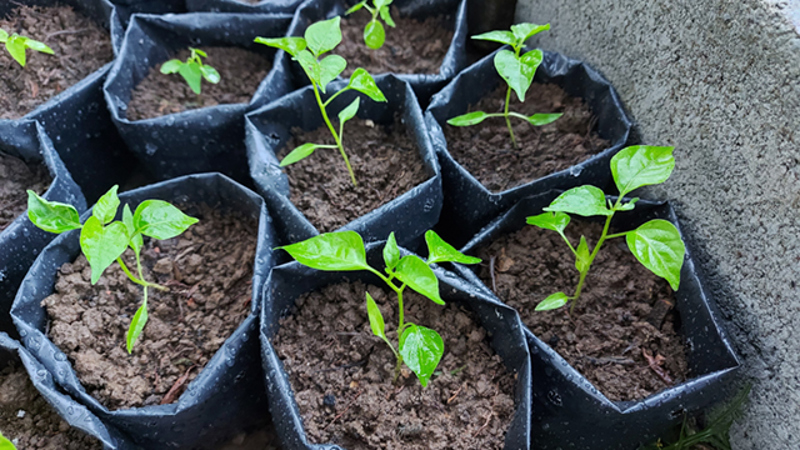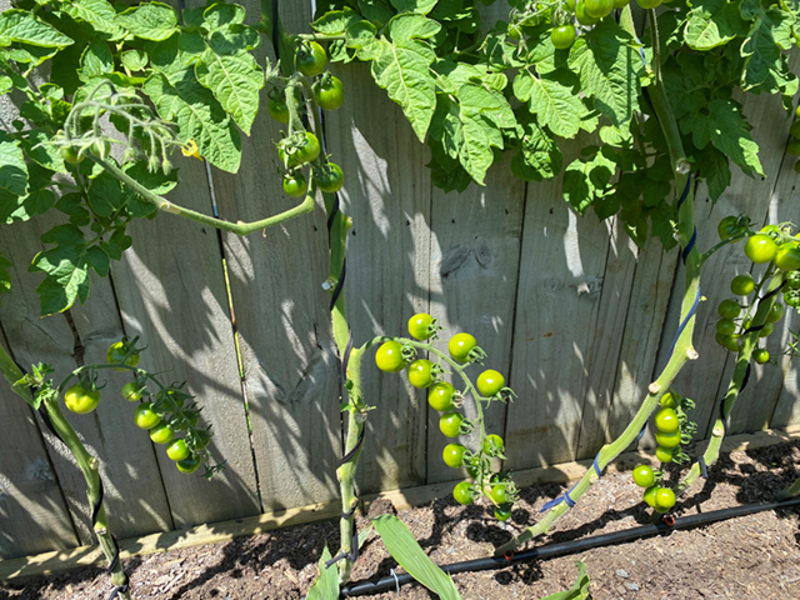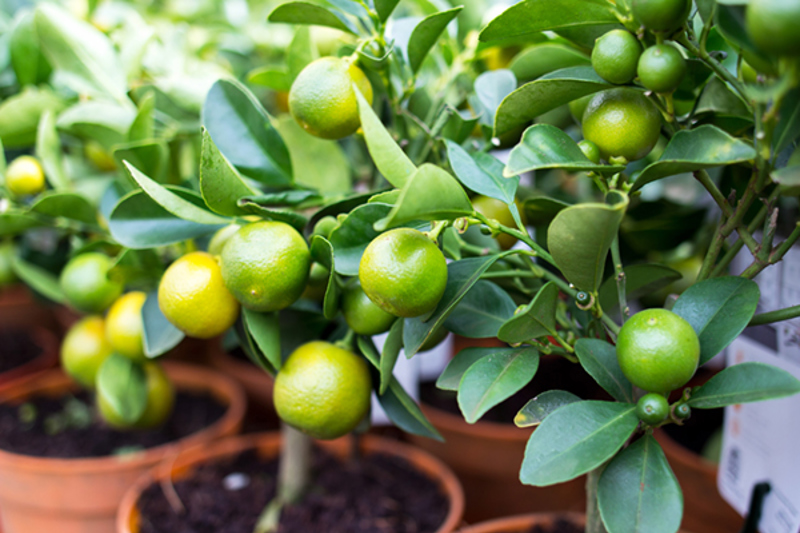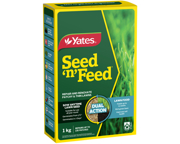Yates Account
Join now
Create a Yates account today!
Sign up to join the Yates Garden Club for monthly e-mails packed with seasonal inspiration, tips for success & exclusive promotions.
Plus if you’re a Garden Club member you can take part in the Yates Growing Community - a blog to share successes, get advice & win prizes in fun challenges along the way!

Forgot password
Enter the email address associated with your account, and we'll email you a new password.

If you’re renting, it’s pretty standard for your gardening opportunities to be reduced. Often your tenancy agreement won’t let you make changes to the existing lawn or garden. But, that doesn't mean that you can't have a garden, it just means you have to be creative within the rules!
Because tenancy rules are almost always intended to protect the property from damage, if you’re careful not to do anything permanent there can be a bit of wiggle room. You’ll need to develop a special mindset to pull it off, which we are going to call ‘stealth gardening’ for this article. Basically, you need to be able to pick up your garden and move it at any time, without leaving a trace – here’s how.
Whether you want to grow vegies, herbs or flowers, there are portable container options that will allow you to take your garden with you when you're on the move. These options span from cost-effective polybags or potting mix bags, right up to gorgeous ceramic pots that add a luxury curated touch to wherever you place them.
Probably the major limiting factor is weight – a stealth garden should be easy to shift, so choose light pots and remember a pot full of wet soil can weigh a lot more than you expect!

At the cost-effective end of the spectrum, have a critical look around your garden area to find spots where you can place polybags, that won’t leave behind bare dead patches in the existing lawn or garden beds. It’s often the case that the sunniest spots are on paths or paving – these spots are ideal to place temporary polybags to grow spring and summer crops. When the season ends you can remove them and clean up easily. Generous PB25 polybags (15L volume) or PB40 polybags (25L) are an ideal choice, as smaller bags dry out faster in hot weather.
You can also place a bag of potting soil on the ground on its back, slice a section out of the top and sow leafy vegies or herbs straight into it.
Take advantage of sunny house or garage walls to grow tall tomatoes; scan up under the eaves for places to hang stretchy cotton plant tie, you can spiral wrap it around the vines and gradually train them to full height out of a polybag. They’re a bit challenging to move at that height, but not impossible!

Portable Plants
Plenty of outdoor plants are portable-perfect. Leafy vegies and herbs are obvious choices, but you can grow almost any vegetables in pots if you want to. Fascinating potted succulents and colourful annual flowers are brilliant options for vibrant colour. Perennial flowers and shrubs are long-lasting choices that add a feeling of structure and permanence in a rental garden, plus provide privacy and screening.
Even fruit trees can be candidates for a stealth garden. It's best to choose dwarf varieties of citrus and other fruit trees, that produce standard sized fruit on compact trees; they're purpose-bred to grow in pots.

Indoor plants make a new place instantly yours; they are the quintessential mobile garden. They look effortlessly beautiful, they oxygenate and clean the air for you, plus they improve your mood and overall wellbeing by creating a more relaxing and inviting space. This is all proven science. On top of that, you get a roomful of undeniable lush gorgeousness. Usually in a rental you can’t change the interior – so if it’s plain (or outright ugly) you can style it your way with plants. If the walls have to stay bare, bring in some glamourous plants and no one will even notice the walls!
Water damage is the key thing to avoid with indoor plants – you want your bond back. Make sure all your plants are in generous drip trays (this is the best excuse to get stylish ceramic cover pots, because they’re leak proof).
Putting in hooks can often be a no-go, so keep that in mind if you have hanging plants. It’s best to hang climbers away from walls, as they can damage wallpaper or paint if they get a foothold on it. Also watch out for aerial roots popping out of pots, they can also get a good grip on walls or floors and leave permanent marks.

Think about Containers
When you have to move your garden around, it's best to choose lightweight containers; you don't want to be lugging heavy concrete pots around. Plastic or fibreglass pots are light, strong and stylish and are ideal for creating a potted garden. Choose large 40 cm and 50 cm diameter pots for fruit trees and shrubs and smaller 30 cm diameter versions for more petite plants. Window boxes and troughs provide additional growing opportunities and are particularly suited to cascading plants like strawberries, nasturtiums, geraniums, mint and petunias.
Look for troughs that can be used with a supporting bracket that sits over a fence or railing, so you won't need to drill any support holes. Hanging baskets are another option for trailing plants and can be hung from pergolas and fences using steel hooks, so there's no need for permanent fixtures.
Although a bit more challenging to move around, plastic portable raised garden beds are also available and create a great space for growing fresh vegies and herbs. And to help maximise growing space, tripods and supports can be inserted into pots for climbing plants to grow up.
How to Move Heavy Pots
Pots can be placed on heavy duty wheels or 'dollies', which are specially designed to make pots portable. Pots can be placed permanently on these wheels or you can just use the wheels to move pots from one spot to another.
Hand trollies are another way to move pots around and many are folding, which means they don't take up too much room when not in use. However you move your pots, when lifting use your knees (and not your back!) and don't be too shy to ask for help. Two people carrying a heavy pot makes things much easier.

Caring for Your Portable Garden
Using quality potting mix is key is giving your plants the best start. Cheap potting mixes usually don't contain enough nutrients or have the right structure to sustain healthy plant growth. Yates Premium Potting Mix is suitable for most plants, is boosted with nutrients to feed plants for up to nine months and is specially formulated to have increased moisture holding capacity. One 35L bag is enough to fill two 30 cm diameter pots.
Potted plants can dry out much faster than in-ground plants, so it's important to include watering in your plant care plans. You can monitor the moisture levels in pots by having a gentle dig around in the top few centimetres of potting mix with your finger. You'll be able to feel whether the potting mix is dry and the plant needs a drink, or whether it's still moist and re-watering can be left for another day or so.
Plants growing in pots also need regular feeding to help them thrive. Feeding with liquid or soluble fertilisers has a double benefit as you can water and feed at the same time. Yates Thrive All Purpose Soluble Plant Food is ideal for feeding most types of outdoor and indoor plants. It contains a combination of the main nutrients that plants need, as well as a range of trace elements for complete plant vitality. It's an easy-to-use soluble powder, just mix one to two spoonfuls in a 9L watering can and apply over the plants and potting mix. Use it every one to two weeks to keep your plants well fed and healthy.

Moving Out? Tidy-up Techniques to Get Your Bond Back
When your lease is coming to an end and you need to spruce up your outdoor areas before the final inspection (and help keep your bond), there are some quick, cheap and cheerful things you can do to repair the lawn and give your garden a mini makeover.
Lawn repair is one of the most common challenges when people are moving out of a rented house. Bare or sparse lawn areas can really stand out come inspection time. As soon as you know you have to move out it’s time to act: here’s how.
Fix Bare Patches in the Lawn
- Using a small garden fork or metal rake, gently scrape the soil in the bare patch back and forth, to create a nice crumbly surface that acts as a soft seed bed.
- If the bare patch is lower than the surrounding soil, it'll look better if you fill and level the low spot with some extra soil 'top dressing'.
- Scatter some Yates Seed'n'Feed over the patch and then gently rake into the surface.
- Gently water the patch and keep the top centimetre of soil consistently moist while the new grass seedlings establish - this is critical to get a good result.
- Once the new grass seedlings are 5-6cm high they can be mown, but don't cut any more than top 2cm off the top of the leaves.
- These new grass seedlings will really help disguise, then fill and repair the bare patch.

Quick Lawn Green Up
A lush green lawn really makes a difference on inspection day, but to get there in time it’s important to use a fast-acting lawn fertiliser for speedy results. Yates Lawn Fertiliser Hose-on contains a blend of fast acting nutrients, including nitrogen and iron to promote quick greening, and comes in a quick, easy to use hose-on applicator. Simply plug the adaptor into your click-on hose and then walk and spray the lawn at a steady pace while sweeping the spray back and forth. The 2L bottle of Yates Lawn Fertiliser will green up and feed 150 m2 of lawn.
Lawn Edges & Mowing
Crisp lawn edges look neat and create an impression of a well-maintained lawn; much more than having grass runners creeping over paths, paving and garden borders. Trim the edges with a line trimmer, manual lawn edger or sharp spade and sweep up any grass cuttings. Then give the lawn a light mow. Don’t be tempted to mow too low, as this can scalp the grass and leave bare patches. Just take the top few centimetres off.
If the lawn has gotten a bit long, it’s best to mow a few times, taking only a third off the grass height at each mowing by gradually lowering the mower each time. These mowings can be done over several days or over a few weeks. Rake up any excess grass clippings or leaves, which will leave the lawn looking much tidier.
Need Some Quick Garden Fixes Too?
To tidy up the garden before inspection time, some economical fixes include trimming hedges and wayward shrubs, removing weeds, applying a layer of mulch in garden beds, cleaning paths, driveways and decks and giving the garden a fast-acting feed.

















Share
Share this article on social media